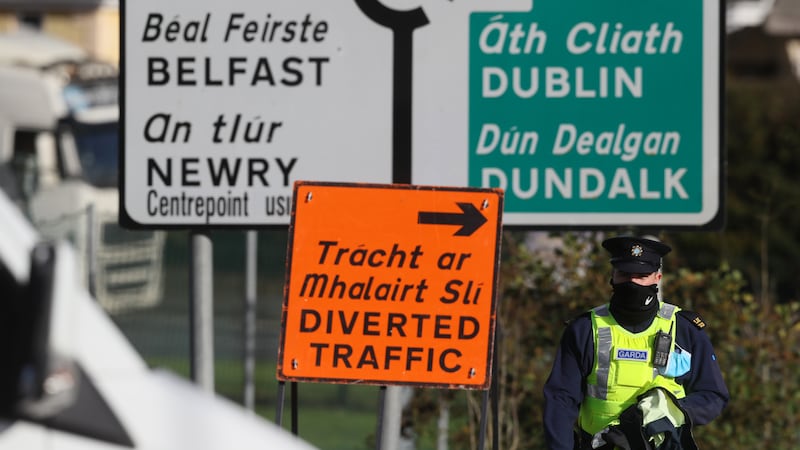Dublin’s four-week pedestrian trial came to an end recently but the initial signs are positive.
The trial, which has been running over consecutive weekends in the Grafton Street area of the city, is aimed at encouraging more people to return for shopping. The rationale behind it is to provide more space for pedestrians and for the numerous cafes and restaurants in the locality.
While the principle of pedestrianisation is nothing new, the Dublin trial shows that there is a willingness to try something innovative and courageous to address both the immediate constraints imposed by the Covid-19 pandemic but also the seismic shift in shopping habits. As most people have long since overcome their fears of online shopping and this trend shows no signs of receding.
This is a huge challenge for local retail and for the hospitality industry in Dublin and also in the north. The executive’s announcement of a new high street task force is a sign of the pressure that is building on elected representatives to take more decisive action to try and help our town centres and high streets.
To have any success, this new task force must address the disconnect that has occurred between our citizens and our traditional high streets over a relatively short period of time.
This has often been exacerbated by the large number of authorities involved in finding a solution to these difficult challenges. The departments of infrastructure, economy and communities, and local authorities all have a role; in a complex arrangement of joint responsibility. So, maybe the creation of this new task force is an attempt to square that circle.
But perhaps we also need to reverse the traditional top-down approach and create a new system of values to help reconnect our citizens and their own public spaces. Our towns and high streets possess a multitude of historic buildings and valuable heritage that many other countries would rightly be envious of so it is important to remove the barriers that discourage visits.
Could a value system be created to address this, based on life enhancing or quality of life values? And if it was, what might these values be?
Therefore, can the results of this new trial south of the border start to convince everyone of the benefits of being slightly less reliant on our cars?
Finally, we should see the end of the blunt instrument of the high street footfall statistics. This should be replaced with a new system that measures duration and quality of visit to our much-cherished town centres and high streets.
CLLR BRIAN POPE
Alliance, Armagh City, Banbridge and Craigavon Borough Council
Social cohesion should guide debate on unified Ireland
I read Brian Feeney’s article – ‘Go figure, the north is a failed political and economic entity’ (August 26) – and I agree.
However, as I read through the rest of the piece my sentiments moved from disappointment to despair. He talks about unionists not telling their voters the truth – sadly this characteristic is pretty common among politicians.
However, on the other side of the political divide it is suggested that Irish unity will create some sort of political and economic utopia without laying out a road map to deliver it and in addition fails to acknowledge the complexity of the unification journey. Issues like, what sort of governing structure will ensure that all citizens in a new Ireland have both a voice and stake? How do we integrate public services and how do we create a progressive secular education system? What Brian has overlooked is the underlying principle that should guide the debate about a unified Ireland is social cohesion.
Regarding Ireland’s economic success, this has been down in no small part to the international tax system which has resulted in large US corporations relocating to Ireland. Sales generated by them has contributed to the significant increase in GDP. The OECD also points out that GDP in 2015 was 24 per cent higher than OECD average household disposable income.
The UK spends more as a percentage of GDP on social protection and is only marginally behind Ireland on per capita basis and Ireland’s public debt is €200bn. UK’S debt per capita is also significantly lower.
Brian went on to suggest that the changing demography would be the catalyst for Irish unification. Believe me this is the last thing we need – majoritarianism is not a route recommended for a successful political project. Brexit could accelerate the breakup of the Union but the debate around our collective future on this Island is more complex than the difference between €185 and £58.
SUNEIL SHARMA
Belfast BT6
Sovereignty of Ireland should in no way depend on a vote
Chris Donnelly’s latest offering, that ‘Northern Ireland’ should continue to exist into and under a United Ireland – ‘Northern Ireland Must Be Written Into Unity Vision’ (August 20) – begs the question as to where is he getting these notions from or whose part is he acting out?
No amount of normalising the artificial gerrymander now presented as ‘home’ by Mr Donnelly will make it so for Irish republicans.
He writes of the ‘inescapable logic of the Good Friday Agreement’. An Irish Republican honours the logic of the 1916 Proclamation — a document which, unlike the GFA, contains no British terms and conditions for Irish unity. A document voted for overwhelmingly in a 32-county election, when Sinn Féin placed it at the heart of its 1918 election manifesto – an election in which Britain made clear her true regard for the consent principle. The Proclamation spurns the sectarian dynamic the Agreement nourishes in any hypothetical ‘unity’ forged under its auspices.
Setting aside that the sovereignty of Ireland should in no way depend on a vote of any description – being an inalienable right of the Irish people – the idea, should the occupiers’ terms be met and a ‘Yes’ vote border poll realised, that we would move onto a revision of the Good Friday Agreement, still bound within the ‘totality of relationships’, rather than an independent 32-county republic is a British strategy and not an Irish one.
Given how the Agreement has been sold this 20 years – that once a majority in the six counties is arrived upon that an independent 32-county republic will then follow – why are we seeing these efforts emerge to game the future?
Do those concerned have one good reason as to why we should settle for anything less than the political integrity of all Ireland?
The political entity styled Northern Ireland was carved on a sectarian headcount, against the wishes of the Irish people. It has been upheld ever since through same. It should, though, and will perish when that headcount no longer holds and in no way should be given further succour..
SEAN BRESNAHAN
Omagh, Co Tyrone







